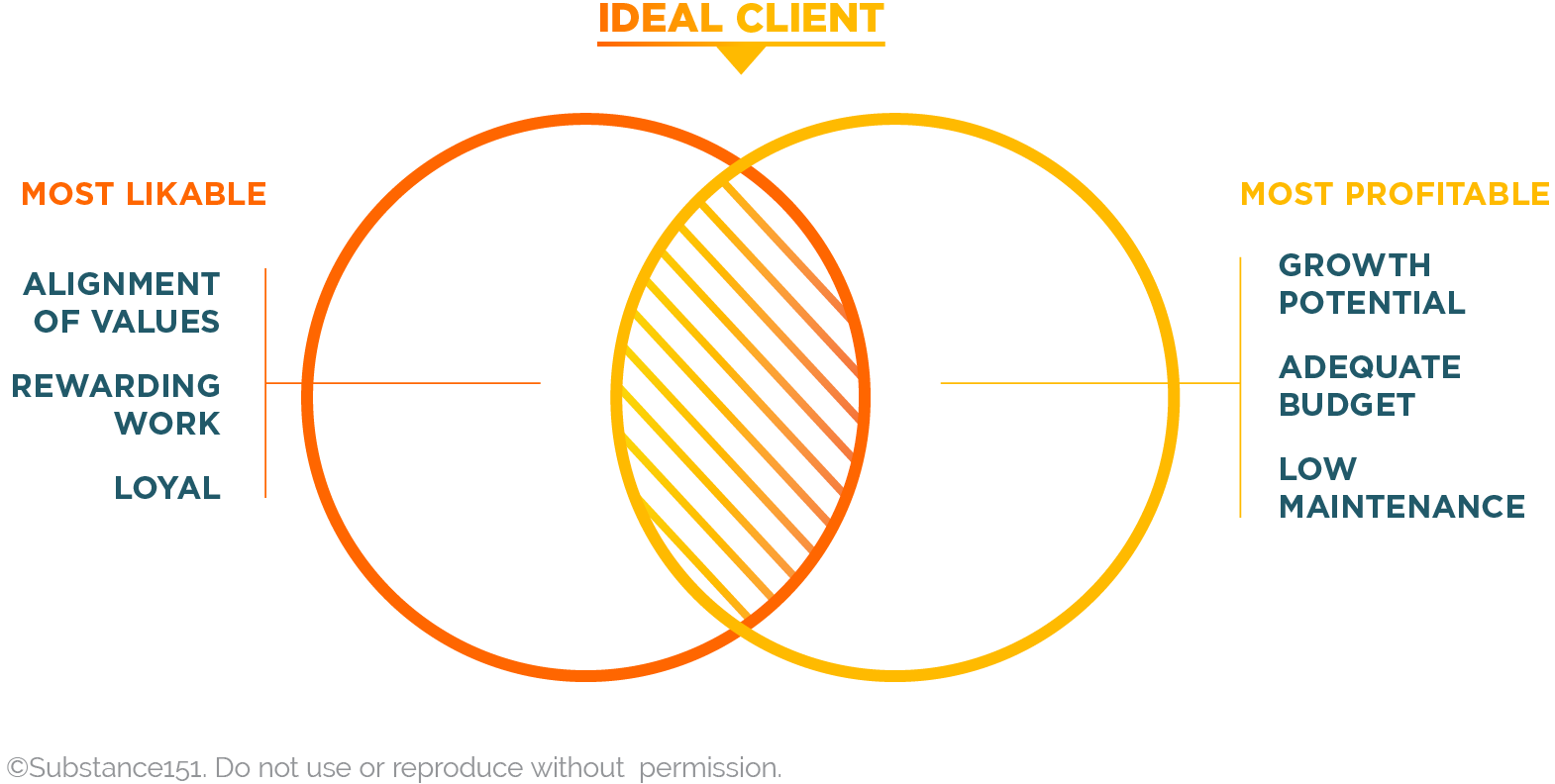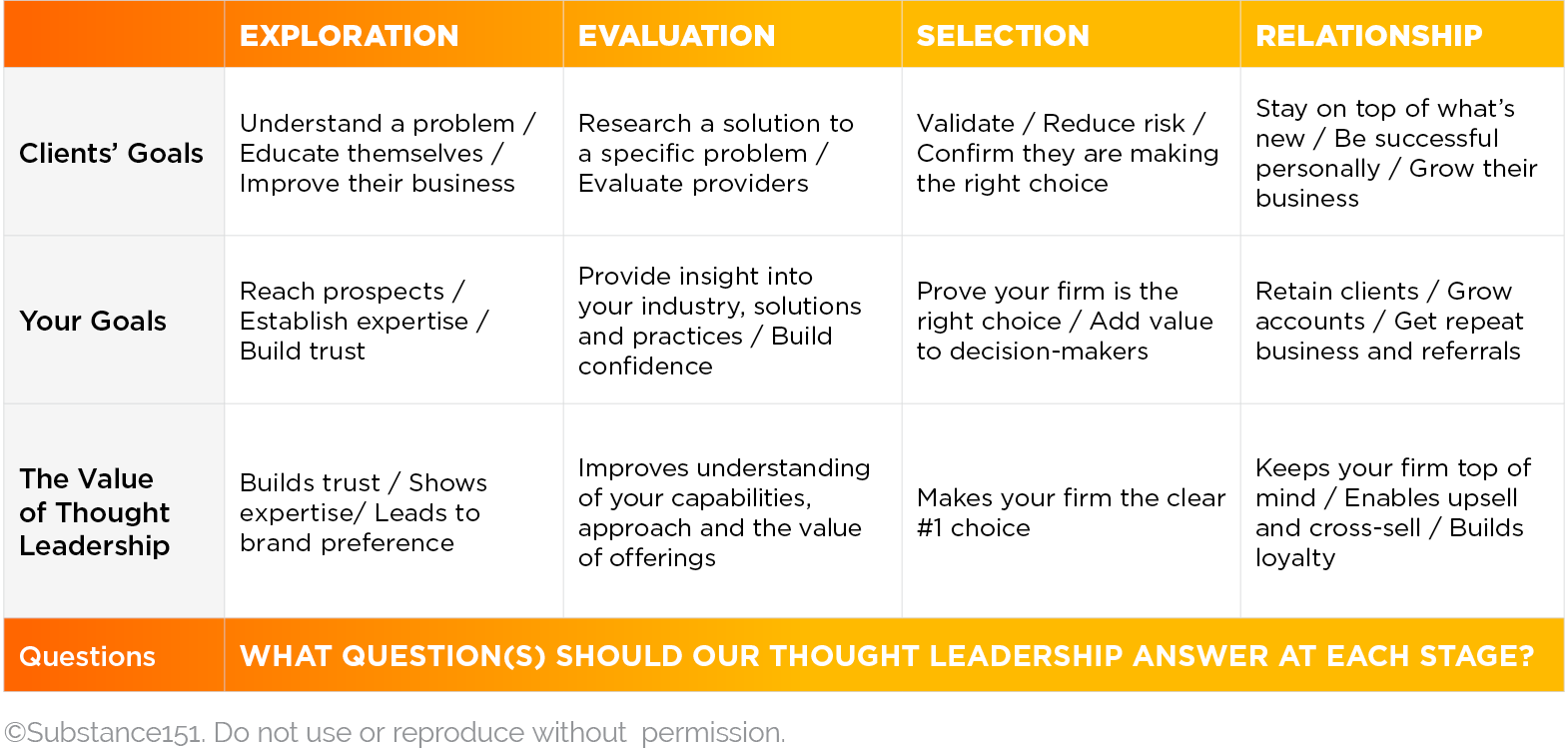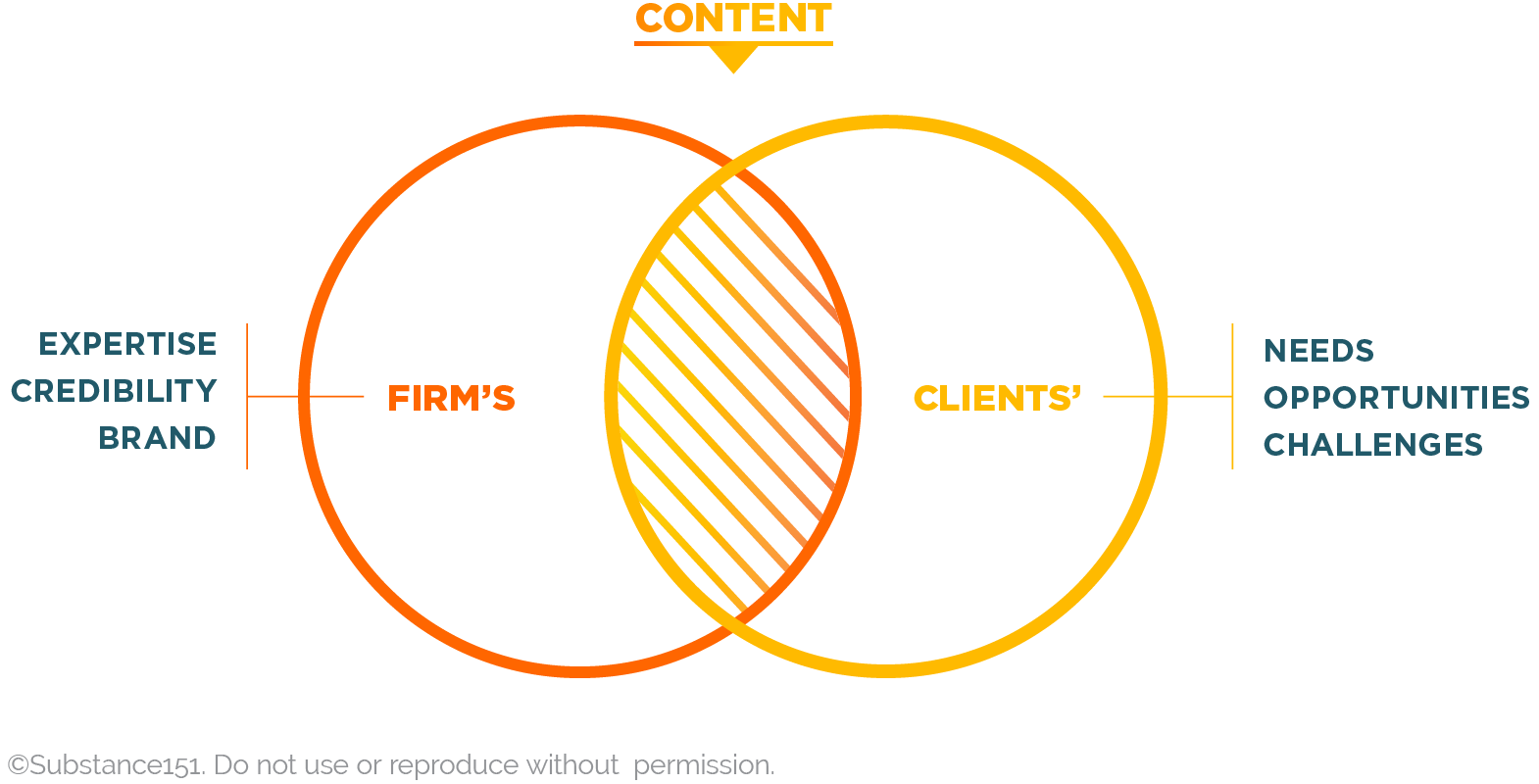Research shows that the vast majority of decision-makers within your client organizations rely on thought leadership to assess your company’s innovative thinking, your expertise in their specific issues, and the quality of your talent – all long before the formal selection process begins.

Yet, according to the most recent Edelman-LinkedIn research, many of these decision-makers feel there is more thought leadership content than they can manage.

With more and more companies publishing more and more thought leadership content, your prospects are overwhelmed. What started as a top differentiator has led to a crisis of sameness among companies and a lack of confidence in making the right decision among prospects.
Anyone can start a podcast, publish a report, and deliver a case study using a clever social media campaign. And everyone does – all directed at the same group of prospects! Simply creating more thought leadership will not give you a competitive advantage.
What’s a marketer to do?
We are at the tipping point of redefining what the next phase of thought leadership could look like. And the first to figure it out will get a competitive advantage.
Set the Right Objectives
Begin by asking: “How can thought leadership help our team win more work?”
Your thought leadership strategy must align with your company’s business strategy, leading to positive business outcomes. Whatever objectives you define, use them to establish before and after benchmarks and success metrics.
Your objectives could be much more granular and specific to your company, but, in general, thought leadership helps in these four areas:
1. Building Brand Reputation and Relevance
Thought leadership helps associate your company with a specific area of knowledge relevant to your ideal customers. This is especially critical when your company needs to change client perceptions or prove its credibility in new markets.
2. Opening New Doors
With a much more self-directed buyer’s journey, prospects spend a lot of time online educating themselves and researching solutions. Thought leadership helps your company be found by a whole new segment of prospects who may not be currently aware that you exist.
3. Moving Prospects to Clients
Thought leadership helps prospects understand how you approach problem-solving and what methodologies you will apply to solve their problems. By building credibility and positioning your company as an expert to be trusted, though leadership reduces the perceived risk associated with hiring your team – especially for the first time.
4. Keeping Your Company Top of Mind
Thought leadership is a critical tool for helping your business development teams, seller-doers and account managers stay top of mind and expand existing client relationships.
Effective thought leadership helps your clients do their jobs, achieve their goals and advance their agendas – it delivers personal value, making your company an essential part of your clients’ teams.
Know What Your Ideal Clients Need
For thought leadership to be useful, relevant and effective, it must align with the needs of your ideal clients at different stages in their decision-making process.
If you don’t have your ideal client defined, start here. There are two parts to defining your ideal client:
- Organizations. Understand the types of organizations your company wants to do business with. These are called “Ideal Client Profiles” (ICPs).
- Individuals. Understand individual buyers within each of those organizations. Organizations don’t consume thought leadership; individual decision-makers do. These are referred to as “Buyer Personas.”

To help you get clarity about the ideal audience for your thought leadership:
- Make a list of your favorite clients (ask your project teams whom they love working with).
- Make a list of your most profitable clients.
- Find the overlap between those two lists.
Next:
- Define what attributes those clients in the overlap share. Are there common types and sizes of organizations, working styles, growth goals and so on?
- Understand how decisions are made within those organizations. Who is involved? What are they looking for and worrying about? What is their decision-making journey?
If you can’t answer those questions, you need to conduct more comprehensive customer research.
Customer Research
Marketing research, including customer research and broader business intelligence, will help you make more effective decisions when planning your thought leadership strategy.
Customer research, especially, is instrumental for everything from developing personas to personalizing topics and content and, ultimately, ensuring your thought leadership gets results.
The depth of customer research will depend on how much information you need to collect, as well as your budget. At the very least, interview these two stakeholder groups:
- Your internal client-facing teams: What do they hear from clients? What are the most common questions and concerns clients bring to them?
- Your ideal clients: What are their needs, challenges and opportunities – now and in the future? What content do they consume and when?
Related Content: Your Ultimate Guide to Better Customer Research (Free Download)
Align Thought Leadership With Your Customers’ Journey

Exploration
The first stage of the journey is focused on prospects’ self-education. They are not ready to engage with you or any similar company yet.
Insightful thought leadership content is especially effective at this stage because it helps prospects understand the issues they are facing and make better decisions. Help them and they will trust you. If they trust you, they will choose you when it’s time to engage.
Evaluation
In the evaluation phase, your prospects are already familiar with your company and are considering it for an opportunity. The focus here is on providing insight into the solutions your prospects need. It’s about showcasing your unique expertise and approach to problem-solving.
Selection
In the selection phase, you want to provide proof of past success. Here, your prospects are looking for insights that are backed by compelling data and case studies.
Retention
The client retention or “relationship” phase is similar to the early stages of the buyer’s journey, except that your clients already know and trust you. Focus on helping them do their jobs. Use thought leadership to stay top of mind, add value, strengthen relationships and strategically grow your client accounts.
Develop Relevant Thought Leadership Content
Content is the primary vehicle for sharing your company’s thought leadership and getting it in front of your prospects and clients.

Your thought leadership content lives at the intersection of your expertise and what your prospects and clients need to know.
How does your expertise help clients solve their most pressing business challenges of today and tomorrow?
When evaluating potential topics, ask:
- What is our expertise? Do we have the right thought leader to tackle this topic?
- What is our brand’s point of view? Is this the right fit for our brand? Is this what we want to be known for?
- Where do we have credibility so that we can be seen as thought leaders?
- What’s the overlap between what we want – or can legitimately talk about – and our customers’ most pressing business needs?
Execute Engaging Thought Leadership Campaigns
In the recent FT Longitude’s “Learning from Leaders, C-Suite Insights” research study, business leaders who consume thought leadership name these two factors among the top reasons why thought leadership fails: the content looks bland or it’s boring and predictable.

It’s not enough to develop original, insightful thought leadership on the topics your ideal clients care about. You have to think about how this content should be produced and distributed so that it reaches the right audience at the right time in their decision journey.
The execution of your thought leadership campaigns needs to be as innovative, engaging and useful as the content itself.
Today’s buyer’s journey is mostly digital, so you need to create thought leadership content for digital, immersive, omnichannel experiences. Today’s leading companies use content hubs, microsites, interactive documents and digital publishing to deliver their thought leadership campaigns.
Formats and Channels
The formats and channels for each piece will depend on the goals, topics and where audiences for this content congregate.
You have to understand how and where your ideal clients consume information at different steps in their journey and then make your thought leadership available in the most creative, easy-to-consume formats.
Form follows function. Always. But design plays a critical role in today’s communications, and your thought leadership must be visually engaging and well presented.
Think beyond whitepapers and static PDFs. Incorporating interactive data, polls, audio and video into thought leadership content will help create immersive digital experiences. Webinars, podcasts, events and speaking are all great channels for delivering your thought leadership.
Show Return on Objective
Your metrics must be aligned with your goals and measured through a combination of analytics and inquiries or leads generated.
Inquiries and leads could be speaking invitations or media requests for quotes on the topic. They don’t always have to be a project lead.
To help with lead generation, consider if a thought leadership piece could be a candidate for a paid campaign. With LinkedIn advertising, for example, you can be very targeted in putting your thought leadership in front of highly qualified business prospects you could not reach otherwise.
Anecdotal data about how thought leadership content is used can be compelling.
Don’t discount qualitative metrics. A prospect referencing your thought leadership content is incredibly valuable. Train your SMEs and other client-facing staff to document and share any anecdotal proof of your thought leadership getting the attention of your ideal prospects and clients.
5 Steps to More Effective Thought Leadership
1. Align Your Thought Leadership With Your Business Goals
Understand how thought leadership can help you achieve your business and marketing objectives. Whether it’s strengthening your brand reputation, generating leads or any other goals you have defined, your investment in thought leadership needs to show a return on objective (ROO).
2. Create Value for Your Clients and Your Company
With volumes of good content created daily, what insights can your experts offer that will add value to your ideal clients and set your firm apart?
Thought leadership has to offer original thinking and provide guidance for better decision-making. This is what creates value for your prospects and clients.
And it should help your company win more business. Although your thought leadership content can’t directly sell your offerings, it needs to relate to the services your company provides and demonstrate your expertise in those areas.
3. Show You Understand Your Clients’ Challenges and Know How to Solve Them
Know what your ideal clients want and need to know. Help them do their job and make better decisions. To cut through the content overwhelm, personalize your thought leadership for each persona and every step in their decision-making process. Going too broad will result in content that’s too generic to cut through.
4. Engage Audiences Through Creative Execution and Omnichannel Experiences
Make sure the execution of your thought leadership campaigns is as innovative and engaging as the content itself. Deliver content in formats suitable for today’s omnichannel experiences and all the different ways your clients consume information.
5. Align Your Thought Leadership to Your Clients’ Decision-Making Journey
To differentiate your company, engage your busy, impatient, overwhelmed audiences with more personalized and, ultimately, more useful thought leadership tailored to every step in their lengthy and complex decision-making journey.
This means not only creating relevant content but also getting it into the hands of the business development and sales teams, seller-doers and project/account managers. Most importantly, you have to train your client-facing teams how to use your company’s thought leadership content at different steps in prospecting, sales and client management cycles.
Need help developing more effective thought leadership strategies and campaigns for your company? Contact us to start a conversation.